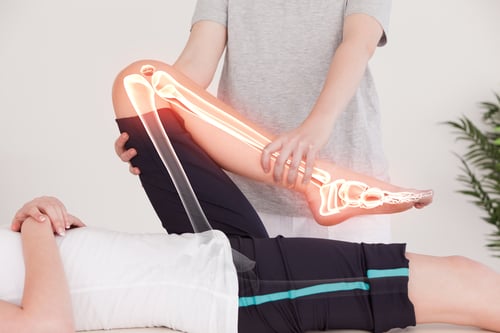
Gout is a painful form of inflammatory arthritis that typically affects a single joint. The big toe is a common target for gout. When a person's kidneys are unable to filter uric acid crystals out of the bloodstream, the crystals can build up in soft tissue, leading to gout flareups. If you are experiencing frequent joint pain, you should see a foot specialist for a diagnosis. While gout can affect a knee, elbow or wrist, about half of all cases are in one of the big toes. Here is a closer look at the symptoms of gout.
- Joint Pain: The pain from a gout flareup is very debilitating. Most patients describe it as feeling like being stabbed with hot needles in the joint. It can be difficult to even put weight on a foot that is affected by gout.
- Fast Onset: A flareup of gout can come on very quickly, advancing from mild discomfort to debilitating pain in just a few hours.
- Isolated Joint Pain: In approximately nine out of ten gout cases, only one single joint is impacted. Fifty percent of gout cases affect a big toe, but the condition can also affect a different joint in the foot, such as the ankle or instep.
- Swelling and Redness: The buildup of uric acid crystals will irritate the affected joint, causing it to swell. The skin around the joint can turn red.
- Joint Stiffness: The affected joint may experience a severely reduced range of motion.
- Difficulty Sleeping: Gout can often flare up while a person is sleeping and he or she will be awakened by extreme pain. Many patients say they cannot even bear the weight of a bedsheet on their big toe during a gout attack. A person's body temperature lowers during sleep, and this causes the uric acid in the bloodstream to harden into crystals. This is why gout frequently affects the toes or fingers of patients; those extremities tend to drop to a lower temperature during sleep.
- Fever: The immune system will try to attack the uric acid crystals, which can lead to fever.
- Short Duration: A gout flareup can last from three to ten days if left untreated. The pain lessens as time passes and the body flushes out uric acid. However, future flareups can last longer. Even though a gout attack will resolve on its own, the condition should not remain untreated because it will only get worse.
- Tophi: When a person suffers from gout for a long time, uric acid crystals can form into small white blocks that are visible through the skin. These crystal chunks are called tophi and are a sign of one of the most chronic types of gout.

If you are suffering from any of the above symptoms and think you might have gout, it's time to see a foot and ankle specialist. Diagnosis will likely involve a physical exam and a joint fluid analysis. Your doctor will be able to help you manage the pain and recommend some dietary changes to help prevent gout flareups.






